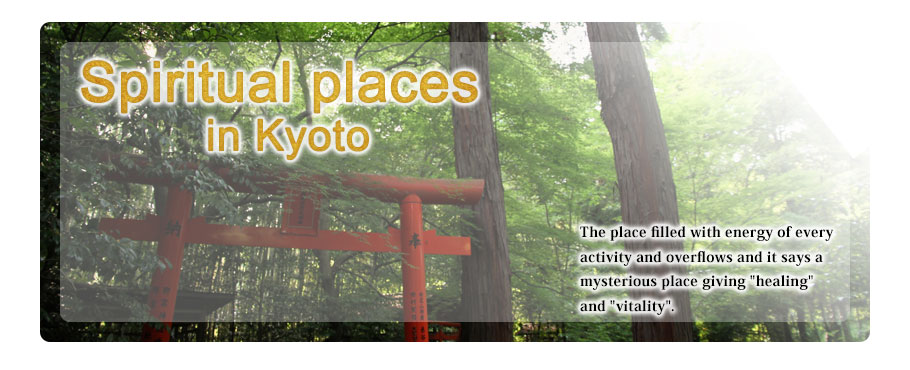
It says a place just staying makes you healthy and vital mysterious places and there so many spiritual places in Kyoto as there are many historical calculated locations’ temples and shrines.
Since long, long time ago, there are different believes depends on different grace in Kyoto such as spiritual water, spiritual stone, spiritual tree and so on ... ...
Each of them has its unique myths.
Perhaps there are grace believing and visiting there.
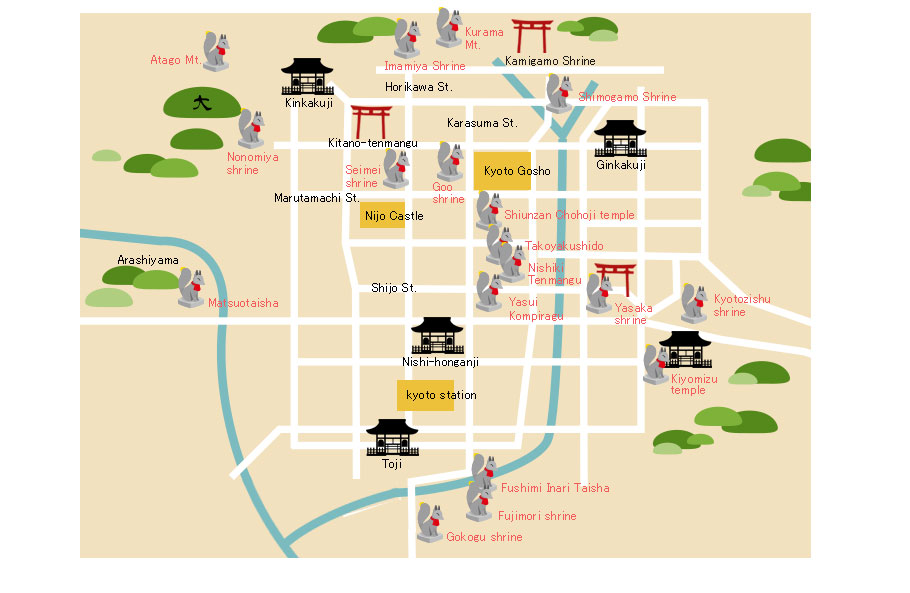
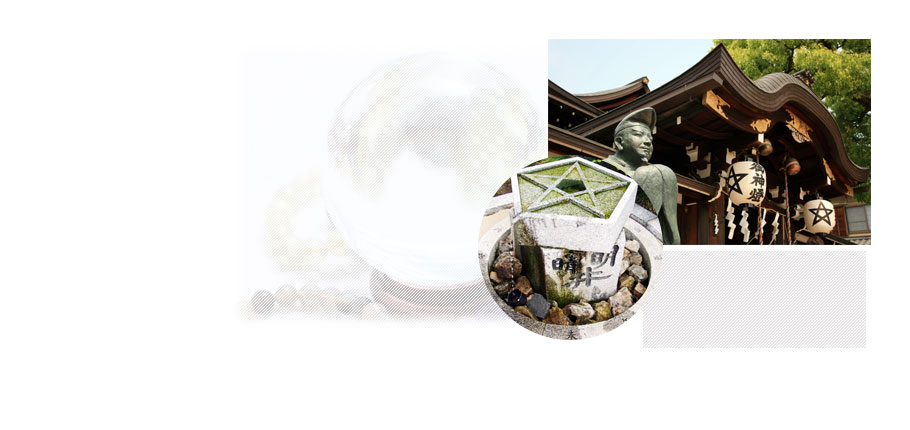
■Seimei Shrine
Seimei shrine locates in the north area of the Kyoto city deifies Seimei Abe who is one of the most famous Onmyoji near a bridge of “Ichijo Modoribashi” where a dead comes back. The shrine locates where Seimei Abe was living.
Onmyoji is a Government official servant of Onmyoryo where takes place of the modern cultures; Department of Science, Meteorological Agency, University for bureaucrats, Astronomers to make calendars and controls time, Department of Divination, etc.
Recently, Seimei Abe’s story became novels, films and Manga.
・Five pointed star
It says the pentagram (five pointed star) is the holly crest of the shrine symbolize the five elements that form all things in the universe. The
theory of the Five Elements implies, which is tree, fire, soil, metal, and water.
The spring water of the shrine made by Seimei’s supernatural power and if you drink it, helps to keep your body stronger against malignant. The priest of the shrine adjusts the spring intake direction to maximize the grace of the water every year.
■Seimei Shrine
806, horikawadoriichijoagaru, kamigyo ku, Kyoto city, Kyoto, Japan
(9:00〜18:00)
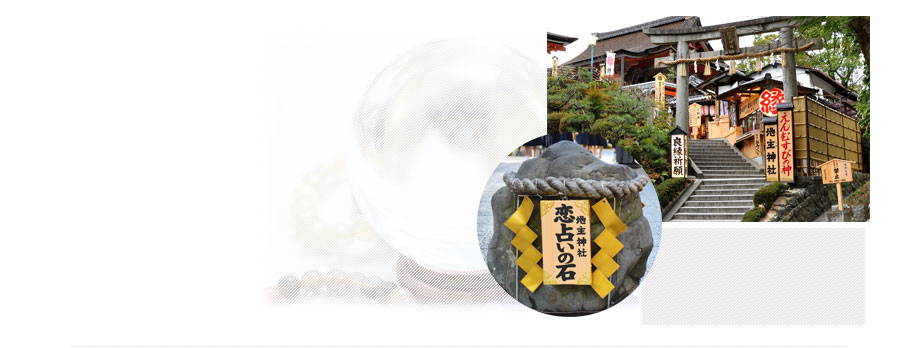
■Kyotozishu shrine
The famous place enshrined a matchmaking god is here. The record says the establishment of the shrine is before foundation of Japan as a country. Especially stones was proved it were there before 10,000 B.C.
・Love fortune-telling Stone
In front of the main building there are two stones. You walk between the two stones, closing your eye. If you could reach to one another, it says your love will realize. The person who reached without any advice, that means the love will realize sooner. The person reached with advices of others, the love will be help the another persons.
■Kyotozishu shrine
317, Shimizu 1 chome, Higashiyama ku, Kyoto city, Kyoto, Japan
(9:00〜17:00)
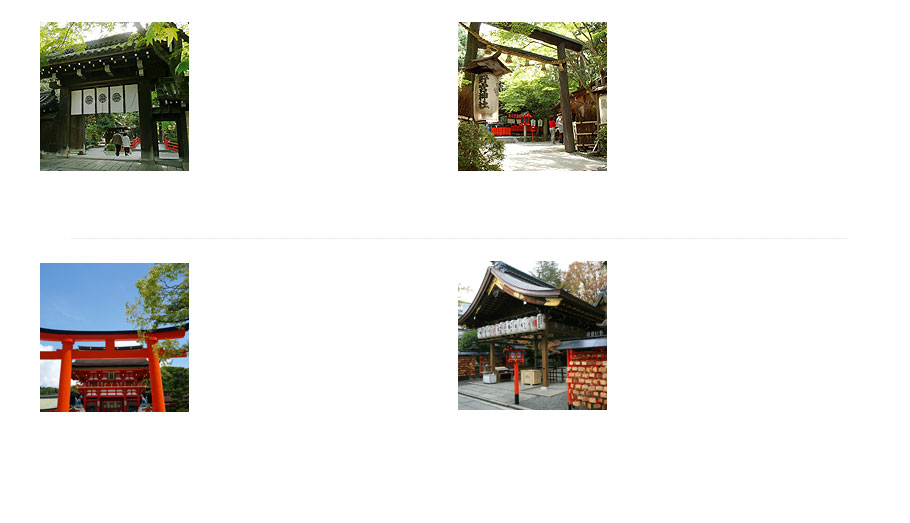
■Imamiya shrine
■Nonomiya shrine
■Fushimi Inari Taisha
■Yasui Kompiragu
From the beginning of Heian Period, it was village shrine of the area.At “Ahokashi san” of the land, crap three times and hang up the stone. Then making a wish and crap your hand again. After that hang up the stone once more. If the stone is lighter then the first time, your wish will come true.
There is the oldest gateway at the entrance to a Shinto in Japan which was build somewhere has clean atmosphere.The god is well known as the god of blessing children, matchmaking and studying. If you wish with stroking the spiritual stone, the wish will comes true in a year.
This is a head quarter of every Inari shrine of all over Japan. The land of shrine is all of mountain. Passing through a famous “Senbon Torii” path, there is a stone lamp calls “Omokaruishi”.When you hang up the lam head, and if its lighter than you thought it says your wish will comes true.
It says the shrine is famous for cut every bad faith and make good faith.First of all, goes to the main building and write your wish on a wooden plate then pass the tunnel of wishes from back to front to cut bad faith and front back for good. When you finish go and return, put and tie your plate.
317, Shimizu 1 chome, Higashiyama ku, Kyoto city, Kyoto, Japan
(9:00〜17:00)
1 Sagano Nonomiyacho, Ukyoku, Kyoto city, Kyoto, Japan
(9:00〜17:00)
68 Fukakusa Yabunouchicho, Fushimiku, Kyoto city, Kyoto, Japan
(8:30〜16:30)
70 Shimo Bentencho Higashioji, Higashiyamaku, Kyoto city, Kyoto, Japan
(9:00〜17:30)
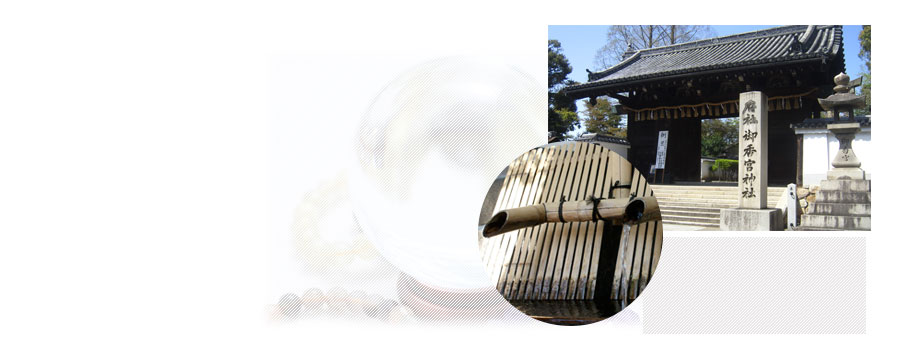
■Gokogu shrine
The famous Sake Fushimi is supported by famous Fushimi water. There is a spring of Fushimi water in the shrine. The building is appointed as important cultural construction.It is also famous of stone garden of Zen which was in Fushimi Justice Department about 100 years ago. The stone garden calls “Karesansui” in Japanese and its Karesansui are really famous
・Gokosui
Spring of good aroma appeared in the land of the shrine, changed the shrine’s name as “Gokonomiya” shrine which has meaning of good aroma.
There is a myth, when an exhausted monkey drinks the spring water, immediately recovered.
The water was using the new born baby’s first bath of Shogun Family.
■Gokogu shrine
174, Gokogumonmae, Hushimi ku, Kyoto city, Kyoto, Japan
(9:00〜16:00)
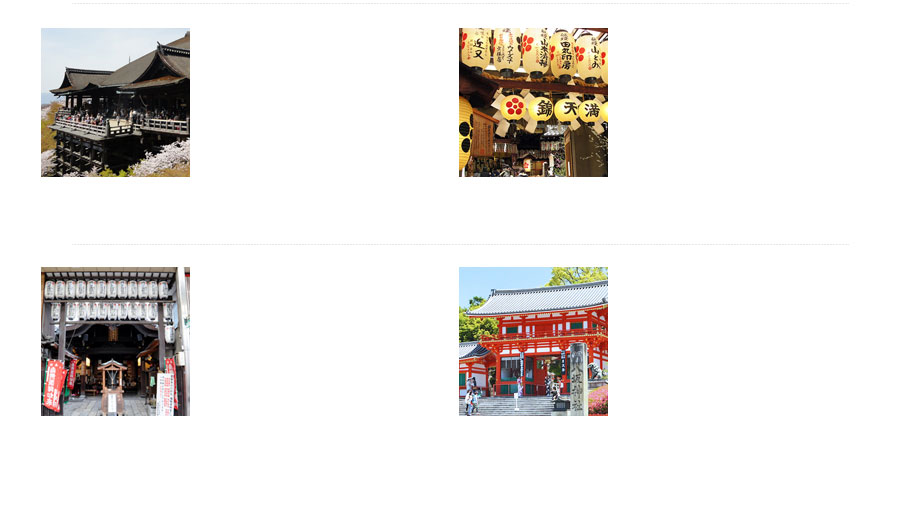
■Kiyomizu temple
■Nishiki Tenmangu
■Takoyakushido
■Yasaka shrine
The temple was named as the water fall of the temple is clean and pure.It says if you drink all three lines’ water, the grace will disappear. So when you try to drink with a ladle, just two lines’ water is the best.
Here is enshrined Michizane Sugawara the god of studying. It says the spring water of here gives a grace of studying.It is a small shrine which locates in the middle of the main shopping area of Kyoto city. Why don’t you get goods with getting grace?
Zenko a monk was treated well his sick mother buying a favorite dish of octopus breaking Buddhism precept. The temple name was come from the story. There is a spring in the temple’s land. Long time ago, when people clean up their body with the spring water, the disease cured and cleaned up their houses the disease which was threat in the city was disappeared.
During the Heian period, the shrine was one of the important 22 shrines. The trust of imperial court was highly trusted and this is the most famous shrine in Kyoto. There is a spring when you drink the spring water of here and visit “Utsukushigozen” building which is a part of Kiyomizu shrine, you’ll be more beautiful.
1 Kiyomizu, Higashiyamaku, Kyoto city, Kyoto, Japan
(6:00〜18:00)
537 Nakanocho, Shinkyogokudori, Nakagyoku, Kyoto city, Kyoto, Japan
(8:00〜23:30)
503 Higashigawacho, Sinkyogokudori, nakagyoku, Kyoto city, Kyoto, japan
(8:00〜16:30)
625 Gioncho Kitagawa, Higashiyamaku, Kyoto city, Kyoto, Japan
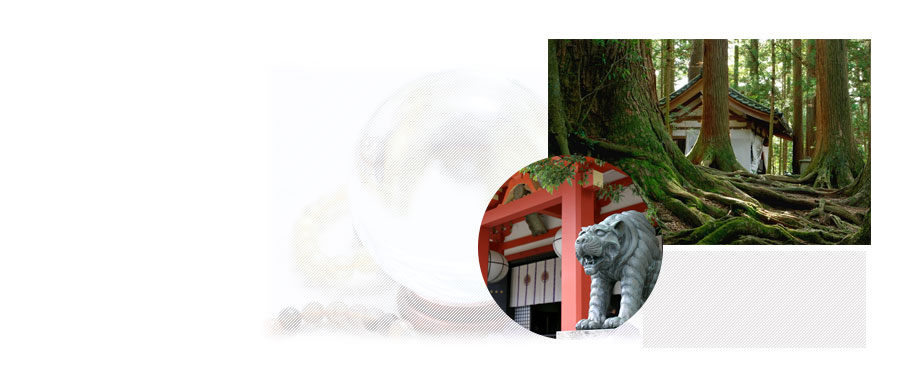
■Kurama Mountain
The mountain locates in Sakyoku (North), height is 584 meters, between Kurama River and Kibune River which expanded from the North to the South. It is known as Spiritual Mountain and developed as training area. The place is known as trained Ushiwakamaru (later Yoshitsune Minamoto who is General samurai and ancestor family of Kamkura Shogunate). It says he was trained to be string with Tengu (One of the Japanese myths God which has long nose and face color is red with white birds’ wing wearing as monk).
・Love fortune-telling Stone
In front of the main building there are two stones. You walk between the two stones, closing your eye. If you could reach to one another, it says your love will realize. The person who reached without any advice, that means the love will realize sooner. The person reached with advices of others, the love will be help the another persons.
■Kurama temple
1074 Kuramahoncho, Sakyoku, Kyoto city, Kyoto, Japan
(9:00〜16:30)
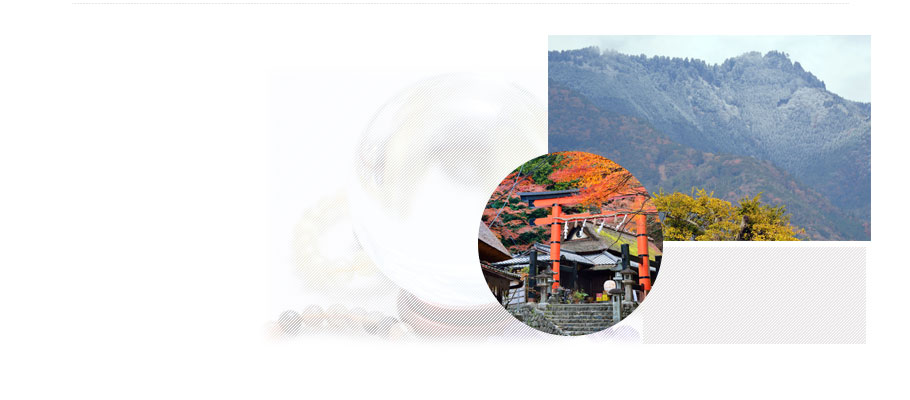
■Atago Mountain
In Kyoto city area, Atago Mountain is one of the oldest getting faith as same as Hiezan Mountain. On the top of the mountain there is Atago shrine which is know as against fire grace since old time. Mitsuhide Akechi, a Samurai General during the Warring States Period who trait Nobunaga Oda (later shogun Hideyoshi Toyotomi and Ieyasu Tokugawa was one of the Oda’s force), made a poem in the shrine before trait his Suprior Nobunaga Oda. The path where Mitsuhide Akechi passed calls “Akechigoe”.
・Atako shrine
The head quarter of Atago shrines which locate all of Japan more than 900 shrines. It locates on the top of the mountain. The mountain has 924 meters height and it says if a child visits there before to be three years old, the child never has trouble related with fire.
■Atago Mountain
1, sagaatagocho,Ukyoku, Kyoto city, Kyoto, Japan
(9:00〜16:00)
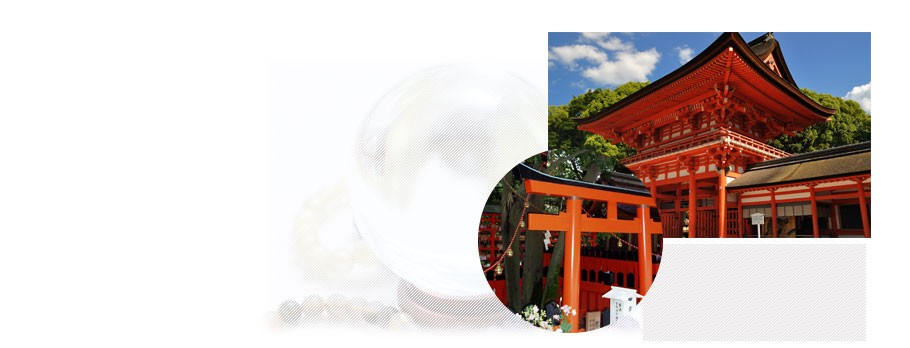
■Shimogamo shrine
The history of Shimogamo shrine can be before Kyoto became the capital. It was a spiritual place previously and the shrine matches with Kamigamo shrine where enshrine same God of Kamo family. Aoi Festival which held both shrine together is famous. In the land there is a forest and pond. During the summer, sometimes comes out bubble from the pond and it says with the bubble a person got a idea of dumpling calls “Mitarashidango”.
・Renri no Sakaki
Next to the gate of Shimogamo shrine there is a spiritual trees which has grace of matchmaking which two of tree trees become a one tree. It is a symbol of matchmaking as it shape. It says when the trees dies, new tree of “Renri no Sakaki”will appears.
■Shimogamo shrine
317, Shimizu 1 chome, Higashiyama ku, Kyoto city, Kyoto, Japan
(9:00〜17:00)
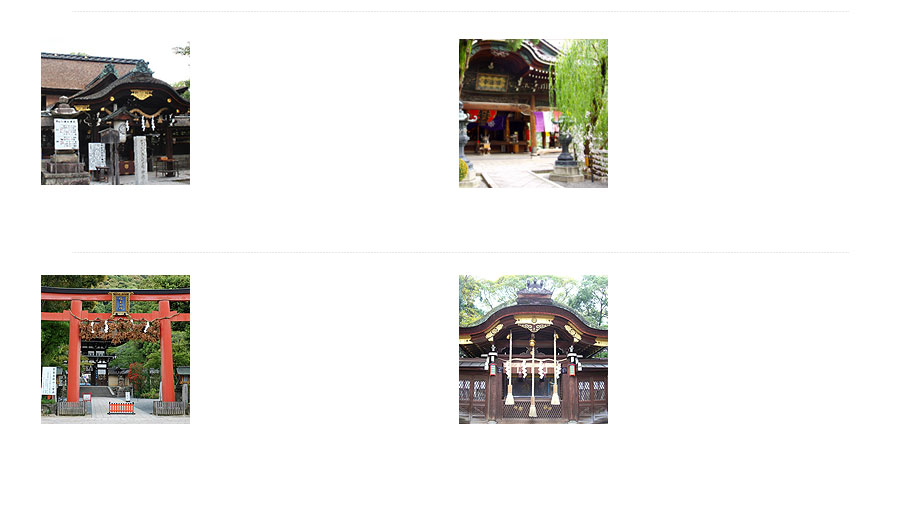
■Fujimori shrine
■Shiunzan Chohoji temple
■Matsuotaisha
■Goo shrine
The shrine was established around 1800 years ago by empress and the shrine still keeps strong relationship with imperial family. The origin of Day of boys (original name is Shobu no Sekku which is known as Kodomonohi) is here. And it says if you visit Japanese yew tree of there, it gives you a grace to remove lumbago.
A famous imperial prince Shotokutaishi was established. The main building has hexagon shape. After time, an emperor got a divine message in dream to go Rokkakudo’s willow tree. When he arrives there found a woman of great beauty, and she became an empress. As this myths, the tree is known as matchmaking.
In the land there is good water’s water fall and well. Many breweries believe Matsuotaisha. And there many important cultural structures such as the main building which was build during Muromachi period. The pine tree of the place is called as “Aioi no matsu”. The tree is known as a symbol of long life and harmony as its female and male pine tree growing from one root.
In the west area of Kyoto established a shrine for Kiyomaro as his historical achievement. Instead of statue of guardian lion-dog which always put in a shrine, there is boar statue in there which myths tell saved his life. Quince tree of the place is known as god tree to seal asthma.
317, Shimizu 1 chome, Higashiyama ku, Kyoto city, Kyoto, Japan
(9:00〜17:00)
1 Sagano Nonomiyacho, Ukyoku, Kyoto city, Kyoto, Japan
(9:00〜17:00)
68 Fukakusa Yabunouchicho, Fushimiku, Kyoto city, Kyoto, Japan
(8:30〜16:30)
70 Shimo Bentencho Higashioji, Higashiyamaku, Kyoto city, Kyoto, Japan
(9:00〜17:30)
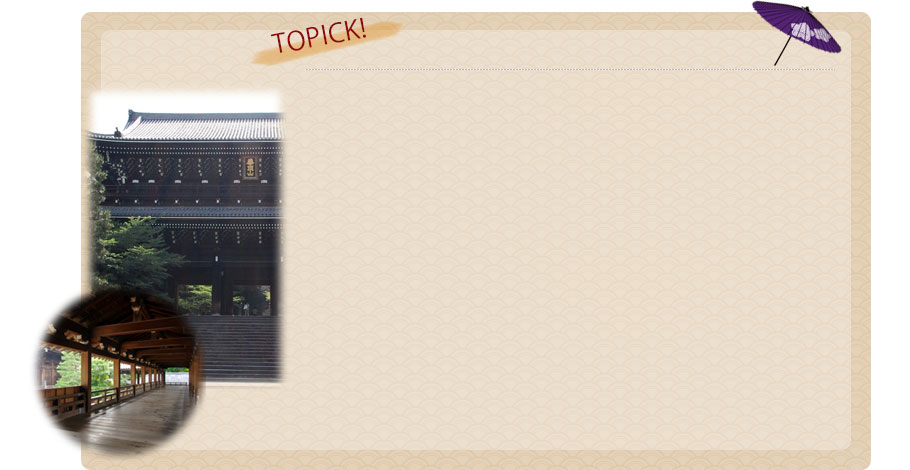
Seven stranges in Chionin
Something strange things happen or exist in particular area calls “Nanafushigi”(seven stranges). Introducing the famous “Chionin Nanafushigi” in here.
- Passageway of bush warbler: It makes sound by waking like bush warbler. When you try to not making sound, it makes more sounds. It calls “Shinobigaeshi”which is against Ninja (normally it’s not necessary in a temple).
- White wood coffin: It says there is a coffin of a couple who the husband was a master builder of construction who were suicide as excess over the estimates
- Forgotten umbrella: One says, a master craftsman left as an amulet and other says a white fox left as gratitude of new tenement.
- Missing sparrow: a picture of famous painter Kano was too well drawn, the sparrow flew away from the picture. You’ll find its mark in the picture.
- Three ways in front cat: This one is also drawn by Kano painter. It eye line is on you from every direction.
- Large dipper: there is a large dipper at passageway’s beam before to enter the Daihoujo (originally it was a bed room). It was used as an emergency arm.
- Uryuseki: near the gate there is a stone which has many strange stories such as a gourd was grown in a night, there is a secret underground passage under the stone, etc.

